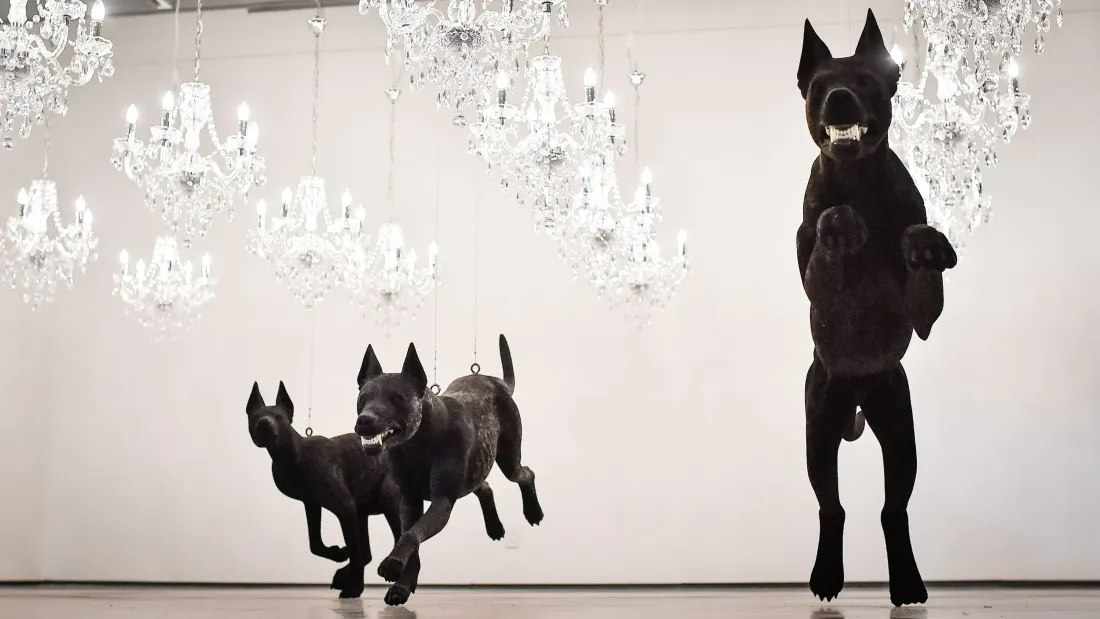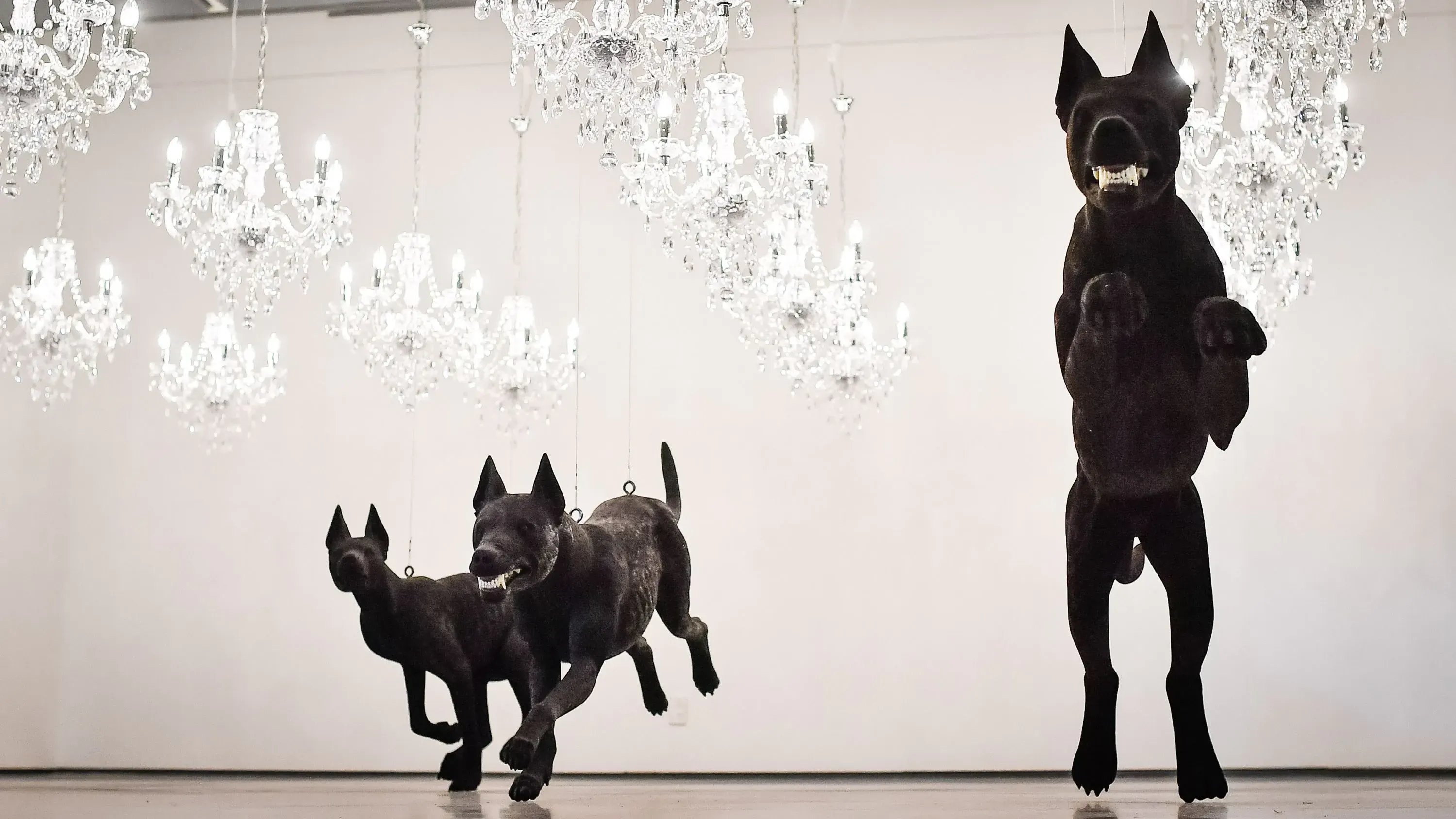Global Anxiety
Written by


As much as Aotearoa New Zealand asserts its place in the world, in the Asia Pacific region, as part of a globalised economy and online environment, there lingers attitudes borne of feeling at a distance. In a far-flung corner. That colonial outpost legacy. And with that there’s a struggle in confidence when it comes to global responsibilities and understandings. Of what our role can be. Markedly different positions in this election campaign on an increase in our refugee quota, for example, for me reflect this.
Our galleries have a leadership role to play in exploring our global position, cutting down a sense of distance, and with it evolving new senses of national identity. Artists take this on individually all the time, but there are wider platforms emerging. Take as example The Asia Pacific Century project, currently at Te Uru Gallery in Auckland until 1 October (which began at Wellington’s Enjoy Gallery in 2016). With an ‘open research hub’ and exhibition it responds to the fact that over the next twenty years, our Māori, Asian, and Pacific populations will grow to make up over 50% of the total population.
The gallery I want to focus on here however is Pataka in Porirua, and, in particular, the current exhibition Dark Horizons.
Since its inception in 1998 Pataka’s strength has been to make this country’s leadership with contemporary indigenous culture at the heart of its concerns - from the exhibition of the work of Māori and New Zealand based Pacific Island artists, to making strong links across the Pacific right over to the first-nations people of Canada. This is a form of global repositioning. And what comes through in Pataka’s programming is that with it comes a set of humanitarian concerns around the treatment of people and their environment. This has only strengthened under Reuben Friends’ directorship, which began two years ago.
Dark Horizons features the recent work of three Australian artists who are part of that country’s Muslim community. Director and exhibition curator Reuben Friend nails it when he writes of their work reflecting a global anxiety. It’s an unsettling but rewarding exhibition to encounter. Dark Horizons feels bold and vital in this regard. Yet also, isolated and anxious. Who else in this country is showing the work of Muslim artists? Or artists who feel a close affinity with the war, terror and refugee crises that has torn through the Middle East, and it effects on Muslim and other peoples throughout the world?
The exhibition follows on from 2016’s Cross Border, an exhibition of video art which focussed on the first hard perspectives of people living in the Southern Mediterranean, and the work of Middle East artists.
Exhibiting the work of Australians, Dark Horizons is closer to home. But this is no gap-filler touring show – it has been produced by Pataka, with the artists and their families brought over for its opening. Indeed, as a welcome cultural conversation starter, it would be welcome to see Pataka follow the lead of the likes of The Asia Pacific Century project and ensure it enables discussion and research reach out into the community and to New Zealand artists around the themes of an exhibition like this. It’s important work.
Dark Horizons makes me feel uncomfortably unfamiliar. It highlights the limited exposure I have to a migrant Muslim perspective. As Friend writes, “fear of the unknown future looms heavy in our minds”. The exhibition delivers the challenge of creating a space for us to deal with that dark foreboding. This isn’t documentary. Nor is there any of the feel-good humour or love in the face of adversity you might find in a feature film. It is confronting and not easy.

“Cry havoc and let slip the dogs of war” comes to mind entering the gallery. You’re welcomed by three black dogs, teeth bared, in suspended, ferocious animation. Perth-born Muslim-Malay artist Abdul-Rahman Abdullah’s ‘The Dogs’ presents a life-size pack, carved beautifully from wood (which I connect to the Malay wood carving tradition) beneath a lowered ceiling grid of chandeliers. The dogs may be on the attack, but they are running from something as much as running towards you. As scared as they are scary. Suspended in fight or flight, I feel empathy as much as disturbance. All those scenes in Disney movies coming flashing back. But this a wild force. Who these dogs represent is open - the work is culturally mongrel.
With the chandeliers something oppressive as it is bright is slowly coming down on these dogs. They might yet escape. The chandeliers represent privilege, sure, but in its regimented grid and reproduced excess I’m thinking of the bling of cheap mass-produced global consumer culture. How the light of all that distracts our eyes from what is going on more darkly out in the world at ground level.
What seemed too easy to the eye initially about ‘The Dogs’ when I saw it – in its ready-made and digital translation to sculpture – grows, much like the work of Michael Parekowhai in its ambiguous emblematic power. Expressing freedom but also a harbinger of danger, open to many ways of coming at it: “Who let the dogs out? Woof woof woof woof.”

Another installation strong in humanity rather than taking sides is Abdul Abdullah’s suite of paintings and embroideries ‘Mission Creep’. Tapestry portraits of two Australian servicemen in action in Afghanistan close up – all shades, technology-laden suits and headgear – frame a multi-panel landscape of the snowy peaks of the Hindu Kush mountain range. Glorious abstract flecks against a blue sky, the panels alternate between being rendered through thread and paint, like a fine arts conversation between Afghanistan and the West.
Splattered across both the mountains and portraits are multi-coloured smiley-faces, as if the work of an audacious tagger working again with thread and paint. In the face of distress, stick a smile on the dial. A viral takeover by a generic icon. Are those emojis really us seeing through the telescopic crosshairs attached to a gun? Certainly those soldiers in all their gear seem removed from their surroundings –estranged and abstracted.
In this way I like the portraits far the best. The handmade embroidery (made with Indonesia’s DGTMB Art Embroidery) sees the soldiers made royally resplendent in velveteen blues and crimsons. You sense underlying trauma, and their gritty endurance in the face of intense weathering. Like those dogs, you feel for them at the same time as dreading what they represent and what they are doing in those mountains.

The third project, Khaled Sabsabi’s ‘We Kill You’ has three distinct parts spread across the gallery, which takes some time to tie together. Less might have been more.
The works have been inspired by the Sydney-based artist revisiting his birthplace of Tripoli, Lebanon, as well as Morocco and Saudi Arabia, connecting to the history and culture of this region.
I’m first taken by a group of small collages, knitting together as wee lattices out of thin strips of images of city scenes from (presumably) Tripoli. They are in the shape of eyepieces, rifle sights or crosses. Sabsabi was born amongst fighting after the Lebanese civil war, and recalls being shot at by snipers. Whilst a simple gesture the act of viewing is a suitably fractured and dislocated reflection, with a sense of telescopic distance. One where the detail of a horizontal slithered cut of a car, or horizontal slice of rubble and ruined high rise makes you think of the carnage that continues in the Middle East.

Sabsadi’s second sculptural work features two busts facing each other, their heads empty chambers save for Arabic script on the inner shell, held by the wrapping of headscarves symbolic of nationhood. Projected onto the wall behind are silhouettes of the negative space from inside: filled with what almost resemble photograms of barbed wire and rubble.
It’s here I start to feel the discomfort of needing more context, of not being able to read all the signs. Yet as Sabsadi’s ambitious video installation next door and the title ‘We Kill You’ makes clear, the work isn’t about making the likes of me comfortable.
Occurring over multiple hanging screens, it’s a work of many different pictorial modes: including images of fenced borders between new settlements and agriculture, a man (the artist, I presume) presenting an angry address to the viewer, a bed of fire, and lines of Arabic script. Yet the messages and images confusingly overlap and swim around each other. It challenges the viewer to not be complicit in the inequities in the Middle East, but it also feels like an expression of the pain of dislocation – a Muslim migrant experience of the knotted issues and complex factions and factors.
This is reflected in the presentation. The screens are two sided, so each image is mirrored, and imagery is constantly repeated and broken in its rhythmic presentation. Holding the space like a whirlpool is film of pilgrims walking around the central Kaaba at Mecca - Islam’s most sacred mosque where all Muslim direct their prayer to.
This works powerfully with short clips of historic footage of processions, and the arrivals of Middle East dignitaries and foreign power brokers. Sabsadi has manipulated these into a surreal dream-like montage employing the early cinematic technique of three-colour separation. Figures wave and walk, and helicopters dance in the sky, shuttering back and forth due to the technique’s splintering of their movements. They appear trapped in an endless stuttering dance.
Dark Horizons, Pataka, Porirua, 27 August – 22 January 2018